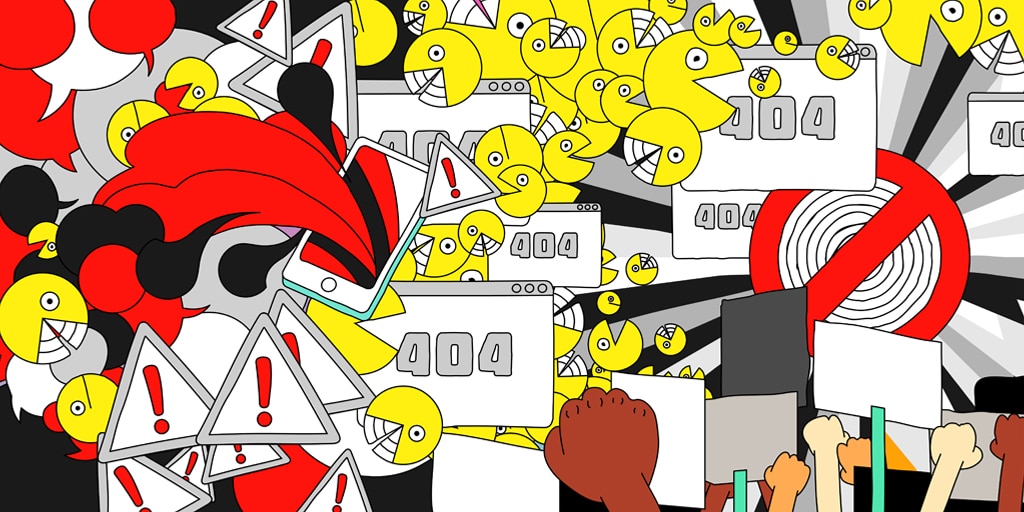Correction, 12/19/23: After we published this post, we learned that UNESCO did in fact disclose data on the consultation processes regarding Draft 1.1, Draft 2, and Draft 3. We apologize for this error.
From our further analysis, we conclude that in the third and final consultation process, UNESCO sought to reinforce the participation of groups and regions that did not have significant participation in the first and second phases (mainly from the Global Majority and vulnerable communities). This means that UNESCO made a methodological change in the consultation after the first two rounds. We commend UNESCO’s efforts at ensuring multistakeholder participation and transparency, and we continue to advocate for longer periods of consultation to ensure these efforts are effective.
—————————————————————————————————————————————
Access Now has been following with concern efforts led by UNESCO to create global guidelines for regulating digital platforms. The final version of the Guidelines for the governance of digital platforms: safeguarding freedom of expression and access to information through a multi-stakeholder approach (“the Guidelines”) has finally been released; however, some concerns remain.
It is important to recognize that in the final version, the Guidelines improved, and one of the milestone improvements is the focus on content moderation processes rather than the restriction of certain types of content. However, some of our previously identified concerns over procedure remain, such as the lack of meaningful consultation with various actors, primarily from Global Majority countries, including civil society.
While the Guidelines state that they are the “result of extensive consultations, enriched by over 10,000 comments,” it is not clear which countries or regions these comments represent (which would help determine if there was a significant representation of the Global Majority), which actors are represented by each of these comments (e.g., states, academia, businesses, or civil society), and what the impact was — that is, whether these comments resulted in any concrete modification of the final UNESCO text. Quantity is not synonymous with quality.
The Guidelines also state that the “Internet for Trust” conference, organized by UNESCO in February 2023, brought together more than 4,000 stakeholders from 134 countries. However, it leaves out the impact or relevance of the consultations that were held remotely, implying that people from Global Majority countries, who could not attend the event in Paris, had significant participation. Yet we are not given the number of remote consultations in each region nor are we informed about the level of participation that different actors have had.
So far, any positive reception to the final version of the Guidelines appears to be overshadowed by disappointment due to the lack of transparency that we have pointed out since January 2023, which appears to have been an immediate consequence of the unfortunate haste with which UNESCO sought to publish the final document.
In addition to the lack of transparency in the process, there is also another absence: the text is missing the glossary of key concepts that was being developed and was supposed to be included after the consultation for “Draft 1.1.” It’s necessary to discuss the document in its entirety with a sufficiently developed glossary, as the lack of definitions created unnecessary vagueness, stemming what could have been a productive discussion generating a high number of comments. Unfortunately, the glossary was not adequately developed and only a nascent section of references on terminology appears in the appendix.
Furthermore, the scope of the Guidelines is still too ambitious and does not adequately address the diverse regulatory landscape in jurisdictions around the world. The creation and promotion of a uniform regulatory framework for the governance of digital platforms, in the terms in which it is proposed, can have a detrimental impact on human rights worldwide and encourage state restriction of civic spaces, especially in countries with fragile or authoritarian democracies.
While some national governments have embarked on or have already enacted state regulation of digital platforms, the broad and vague language of the Guidelines risks empowering regulators to bend the systems and processes of private companies toward inappropriate ends, such as censoring dissent, curbing freedom of expression, restricting access and the sharing of information online, and damaging other human rights.
The problems associated with the spread of disinformation, hate speech, and incitement to violence can hardly be resolved through the implementation of universal tools that do not align with the reality of particular regional contexts. To avoid the pitfalls of absolute and opaque models of state regulation, UNESCO should aspire to facilitate the generation of tools for taking a regional approach to the guidelines, putting human rights and the most protective approach to freedom of expression at the center.
We urge UNESCO to focus its efforts on promoting regional and capacity-building efforts with each of the relevant regional institutions to prevent the vagueness and haste with which the Guidelines were drafted from serving as an incentive to create state regulations for censorship and control of online content. In addition, UNESCO should make comments on the Guidelines transparent, including identifying where they originate from, and the actors they represent.
